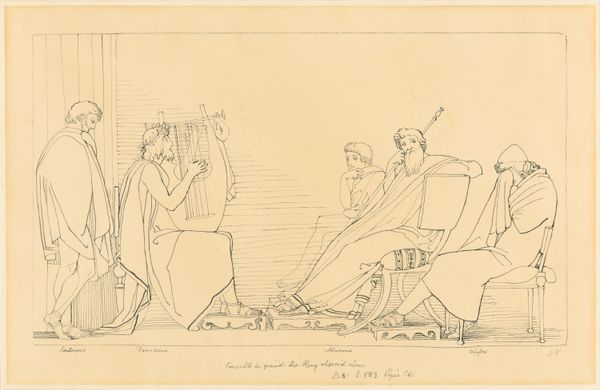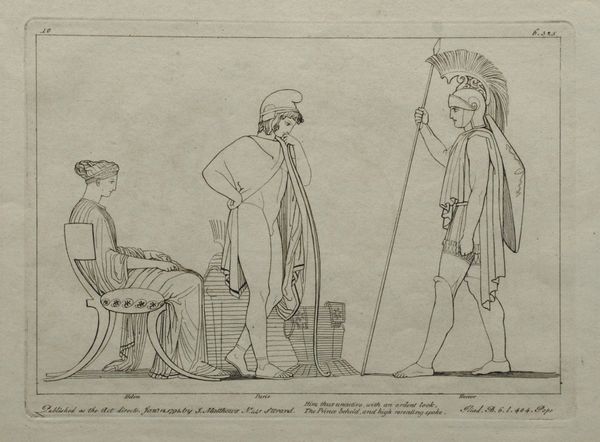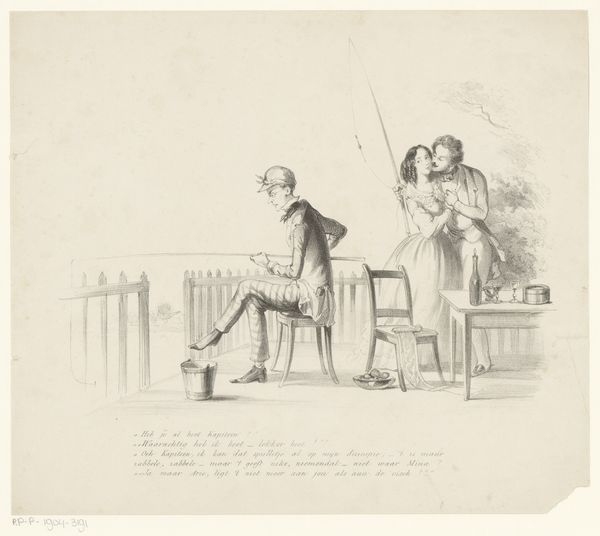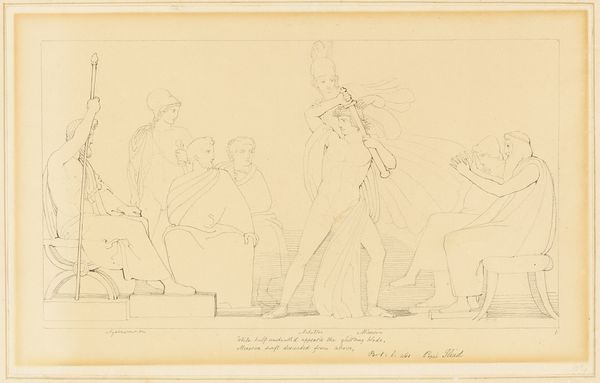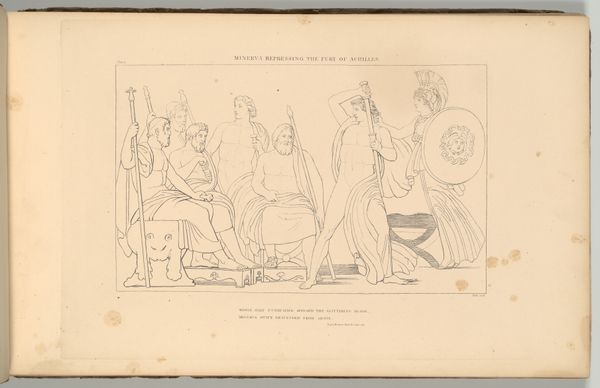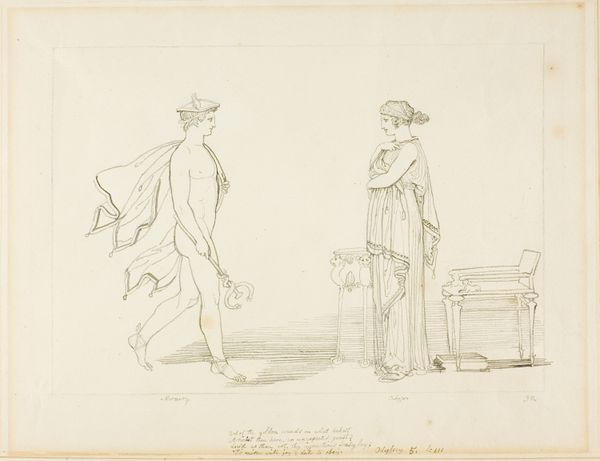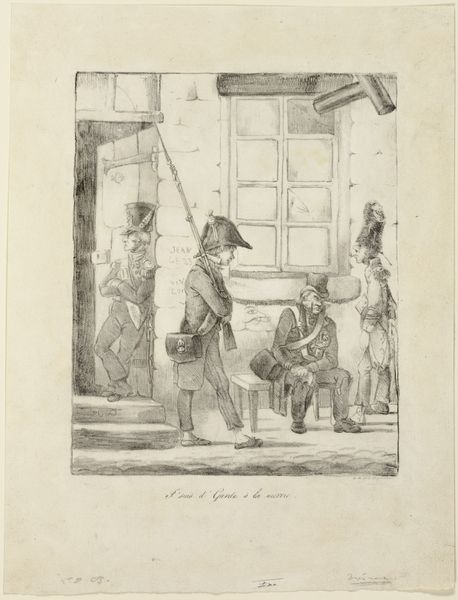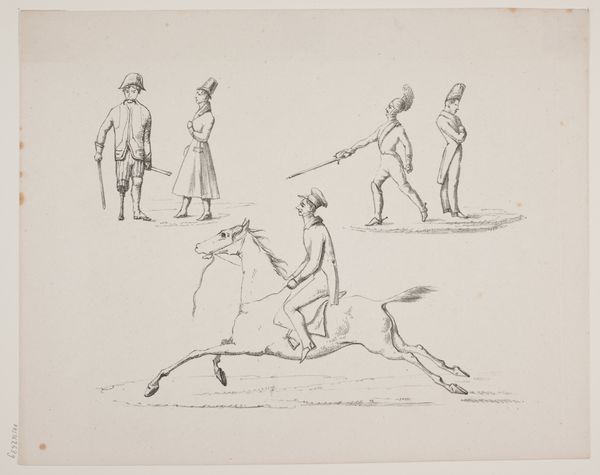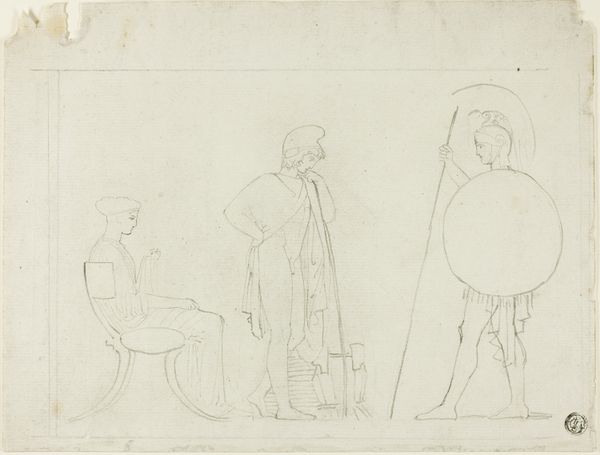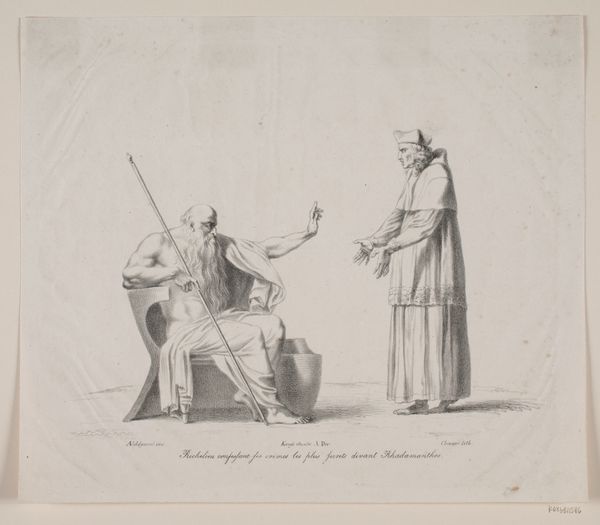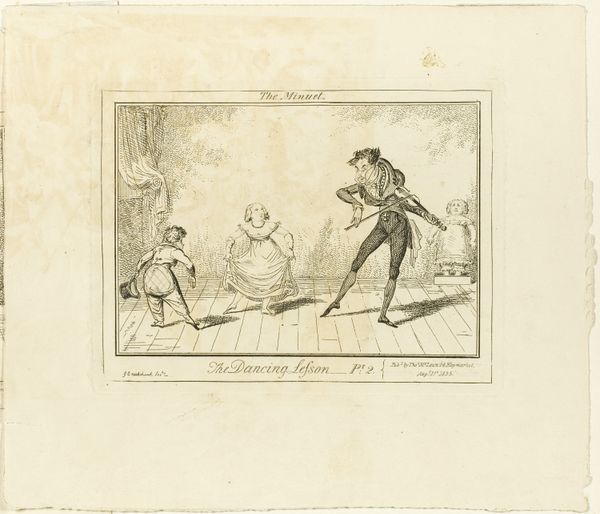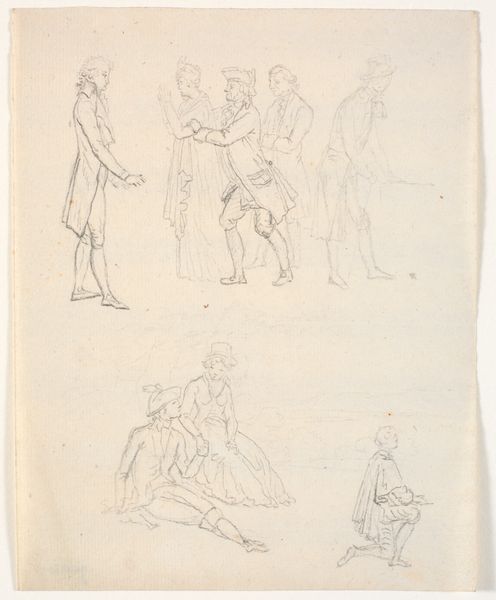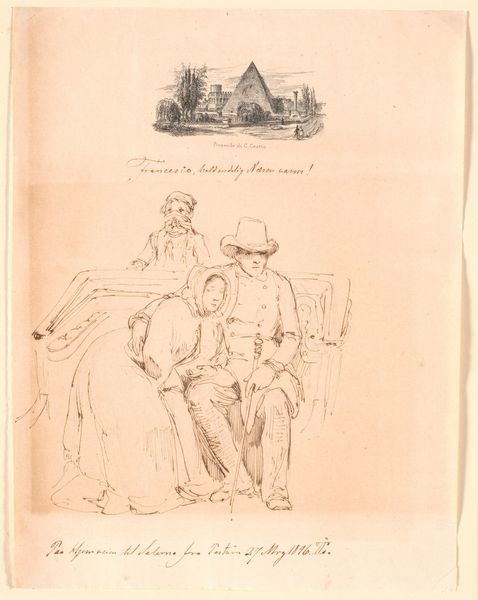
drawing, print, paper, ink, pen
#
drawing
# print
#
greek-and-roman-art
#
figuration
#
paper
#
ink
#
ancient-mediterranean
#
line
#
pen
#
history-painting
Dimensions: 216 × 285 mm
Copyright: Public Domain
Curator: Here we have John Flaxman's drawing "Achilles and Patroclus." Undated, it presents a scene rendered in ink on paper. What strikes you first? Editor: The quietness. The stillness is almost haunting. It’s all so minimal, so refined… like a memory etched in pale ink. There’s such melancholy. Curator: Minimal is apt. Flaxman, steeped in Neoclassical ideals, simplifies the forms down to their essence. The line becomes the primary vehicle for conveying narrative and emotion. It seems he sought to purify design and elevate it from superfluous decoration, emphasizing linear contours. Think of pottery production with designs added using similar graphic restraint, an emerging consumer good. Editor: Absolutely, the lines are doing a lot of work here. There is the spare depiction of Achilles, head bent, almost lost in his music. It contrasts starkly with the weighty, symbolic armour standing guard beside him. You get the impression of stifled energy. Curator: Note how the composition emphasizes restraint. Each figure, framed by a simple chair, occupies distinct spaces. Their separation reinforces a narrative of suppressed passions. We see a tension that's not merely emotional, but reflective of the burgeoning industrial systems of labour within Flaxman’s period, as well as aesthetic disputes around high and low art distinctions, all emerging concurrently. Editor: Yes, their connection feels… contained, mediated. I keep coming back to the lyre. It’s not just an instrument; it's a conduit for the unspeakable. A barrier and a bridge. The image suggests the suppression that rigid societal structures place on intimacy between men. It reminds me of long ago… feelings I wasn't allowed to show. Curator: Flaxman was deeply influenced by the social reform movements of his time, advocating for the integration of art with industrial production, as well as challenging hierarchies in academic art instruction. "Achilles and Patroclus" speaks of emotional restrictions and how this print aesthetic became embedded in commodity culture. Editor: I suppose that blend is why this still speaks so clearly across time. To me, the raw pain, thinly veiled, really comes through. Curator: Ultimately, Flaxman’s drawing is more than a story of legendary heroes; it's an observation of its social fabric that holds a continued emotional and intellectual resonance. Editor: Yes, it is a delicate reminder of the tensions that still vibrate just below the surface of modern life.
Comments
No comments
Be the first to comment and join the conversation on the ultimate creative platform.
